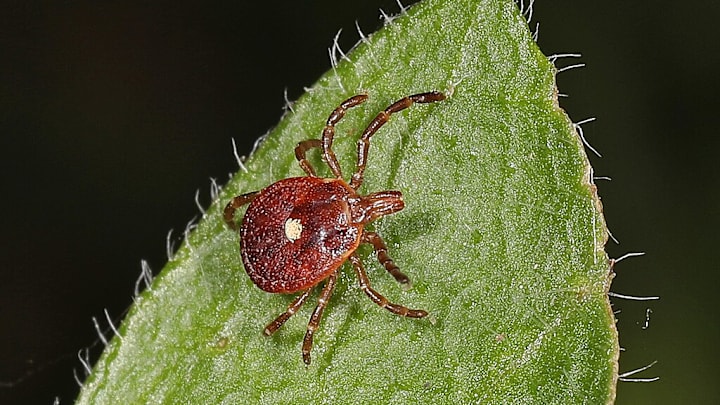A type of tick whose bite causes humans to develop alpha-gal syndrome, a bizarre, potentially fatal allergy to red meat, is spreading northward in the U.S. But experts say that a household item that retails for less than $5 can serve as a good first-line preventive measure.
- Which Ticks Can Cause Red Meat Allergy?
- An Anti-Tick Tool You May Already Have at Home
- Removing an Embedded Tick Requires Tweezers
Which Ticks Can Cause Red Meat Allergy?
Lone star ticks (Amblyomma americanum) are the United States’ most prolific spreader of alpha-gal syndrome, a.k.a red meat allergy. When the tick bites a human, it transfers a sugar molecule called galactose alpha-1, 3-galactose, or alpha-gal, which can trigger the person’s immune system and cause an allergic reaction when they consume beef, pork, lamb, or even gelatin. Some break out into hives, and some can suffer heart attacks.
Climate change has allowed lone star ticks to expand from their traditional range in the Southeastern U.S. to as far north as Maine, according to the Guardian. No one has an exact count of new cases of alpha-gal syndrome annually, but experts think that over the last decade or so, the number has increased from a few dozen a year to a few thousand. A CDC lab monitoring the prevalence of alpha-gal syndrome by looking for antibodies in blood samples recorded a 41 percent increase from 2017 to 2021.
An Anti-Tick Tool You May Already Have at Home
Adult female lone star ticks can grow up to an eighth of an inch long (when they’re not gorged on your blood), while adult males are smaller at about two-tenths of an inch, and their larvae and nymphs are even tinier—no bigger than a poppy seed. But they can still bite and pass on diseases like the grown-ups.

Eliminating these nearly invisible arachnids from your clothes and body, before they bite, is key to avoiding alpha-gal syndrome and other pathogens carried by lone star ticks. Sharon Pitcairn Forsyth, a conservationist in the Washington, D.C., area, told the Guardian she uses a regular lint roller on her clothing after returning from the outdoors to grab ticks she may not even see. Lyme disease awareness organizations have advocated this method for years, particularly to remove ticks from shaggy dog fur.
Removing an Embedded Tick Requires Tweezers
The lint roller method does have limitations. Experts say that once a tick has embedded into the skin and started sucking blood, a lint roller will not be strong enough to dislodge it. In that scenario, it’s best to grip the tick with tweezers or a Tick Key-like product and remove it to prevent parts of its mouth from breaking off and staying in the skin, possibly spreading infection.
While lone star ticks are the main spreaders of alpha-gal syndrome, other species of ticks spread Lyme disease, Rocky Mountain spotted fever, Tularemia, and more. The good news is that a lint roller can help remove all of them and decrease your chances of becoming ill.
Find More Helpful Tips:
